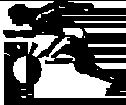|
The
Beginning
 Since
the Action Learning team is new, it is important for the group to spend
time getting to know each other and develop group norms.
This process need not be as lengthy or elaborate as it would be with a self-directed work team.
The team may also need formal training in certain areas such as workcell design or process
improvement. Since
the Action Learning team is new, it is important for the group to spend
time getting to know each other and develop group norms.
This process need not be as lengthy or elaborate as it would be with a self-directed work team.
The team may also need formal training in certain areas such as workcell design or process
improvement.
Fixing The Problem Versus Learning
Several thousand years
ago it was pointed out that teaching a hungry person to fish was better than giving them a fish
to eat. Not much has changed in that respect.
The primary goal of Action Learning is the learning experience. Solving the
problem is important but secondary to learning. It is easy for the group and easy for management
to get caught up in the problem and shortcut the learning component.
Timeframe
The Active Learning team establishes a
timeframe for the project in the early planning stage. This timeframe
should allow for learning processes includes formal reflection and informal
internalization of knowledge between sessions.
|
Facilitation
Facilitation practices in Active Learning vary widely
and there is a range of opinion about their best role. Some facilitators are active in the
beginning and then fade away as the group progresses. Others stay with the group throughout the
project. However, some things are generally agreed.
-
Facilitation is
most important in the beginning. This is where the
facilitator guides the group in establishing norms, explaining the goals and ensures that
planning is consistent with Active Learning principles.
-
The
facilitator must not dominate the group or solve the
problem for them. A facilitator may allow the group to flounder and, apparently, waste time.
This time, however, is not really wasted; it is part of
the learning process. The most important learning usually comes from struggling, floundering
and making mistakes.
-
The facilitator
should always be available, if the team requests help,
to smooth group processes or provide specific training or expert advice.

|





